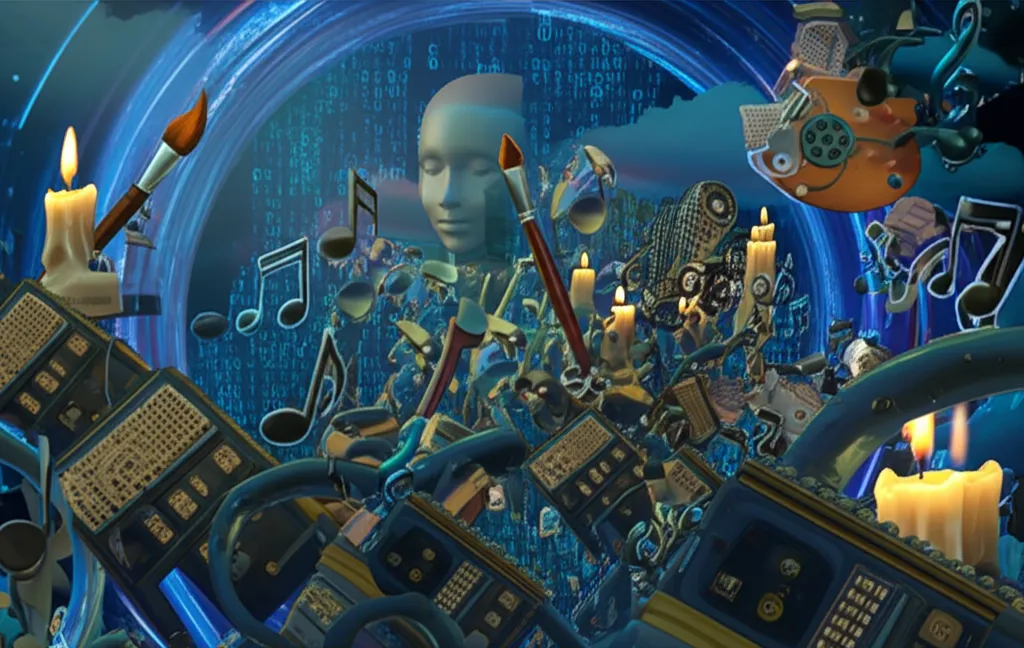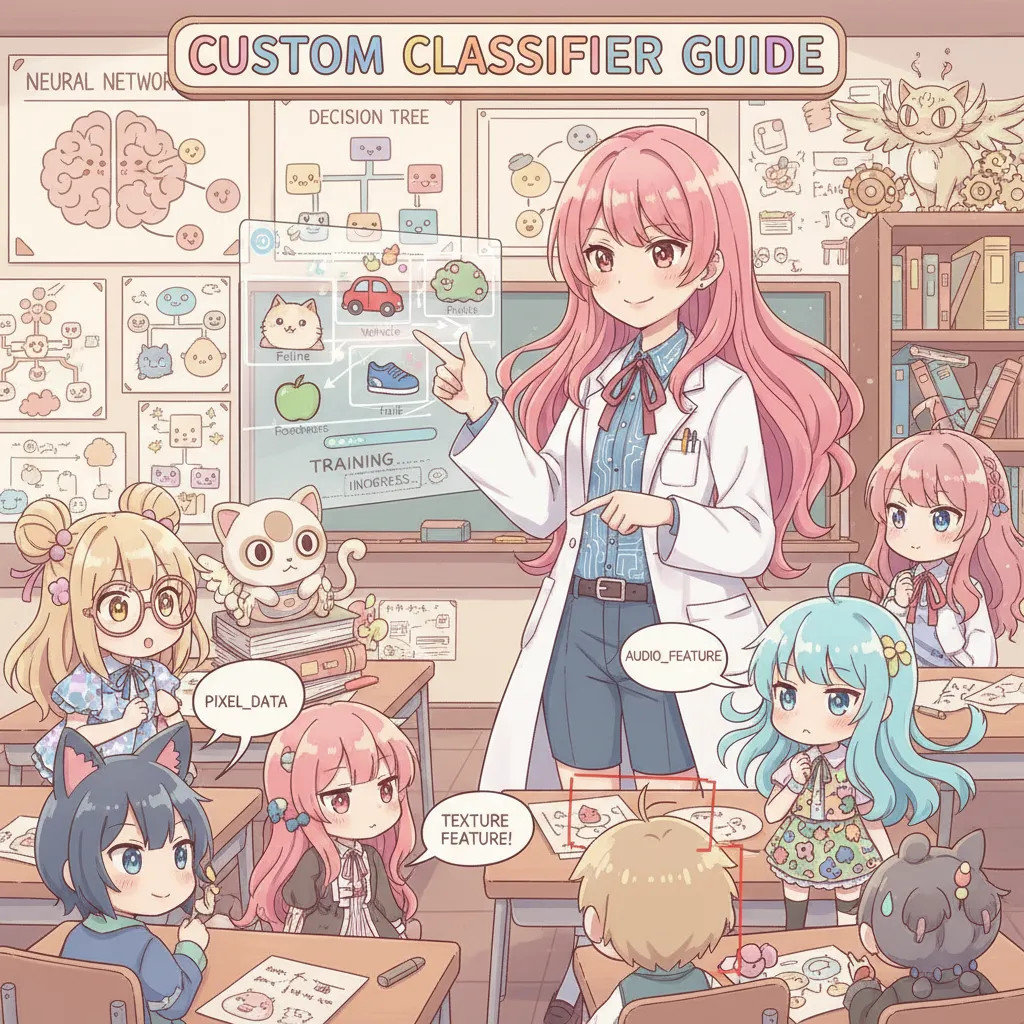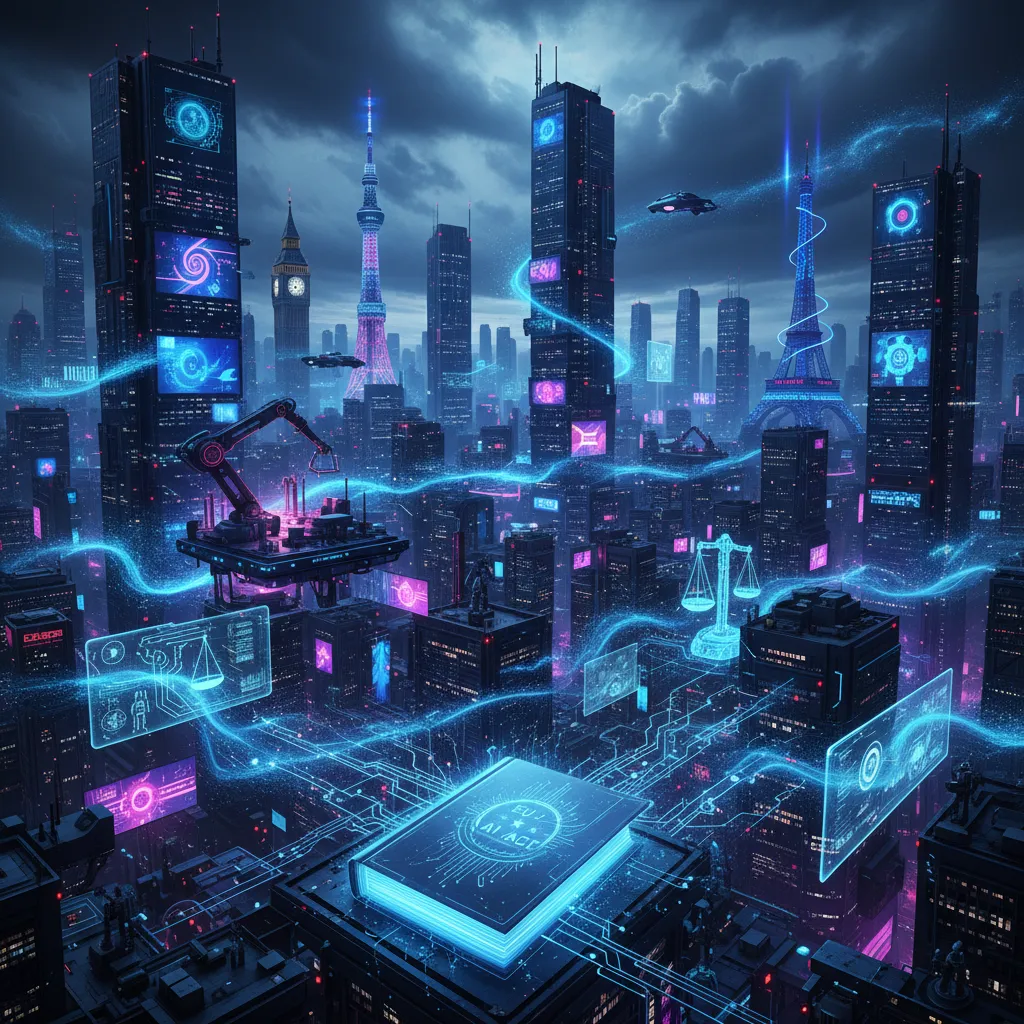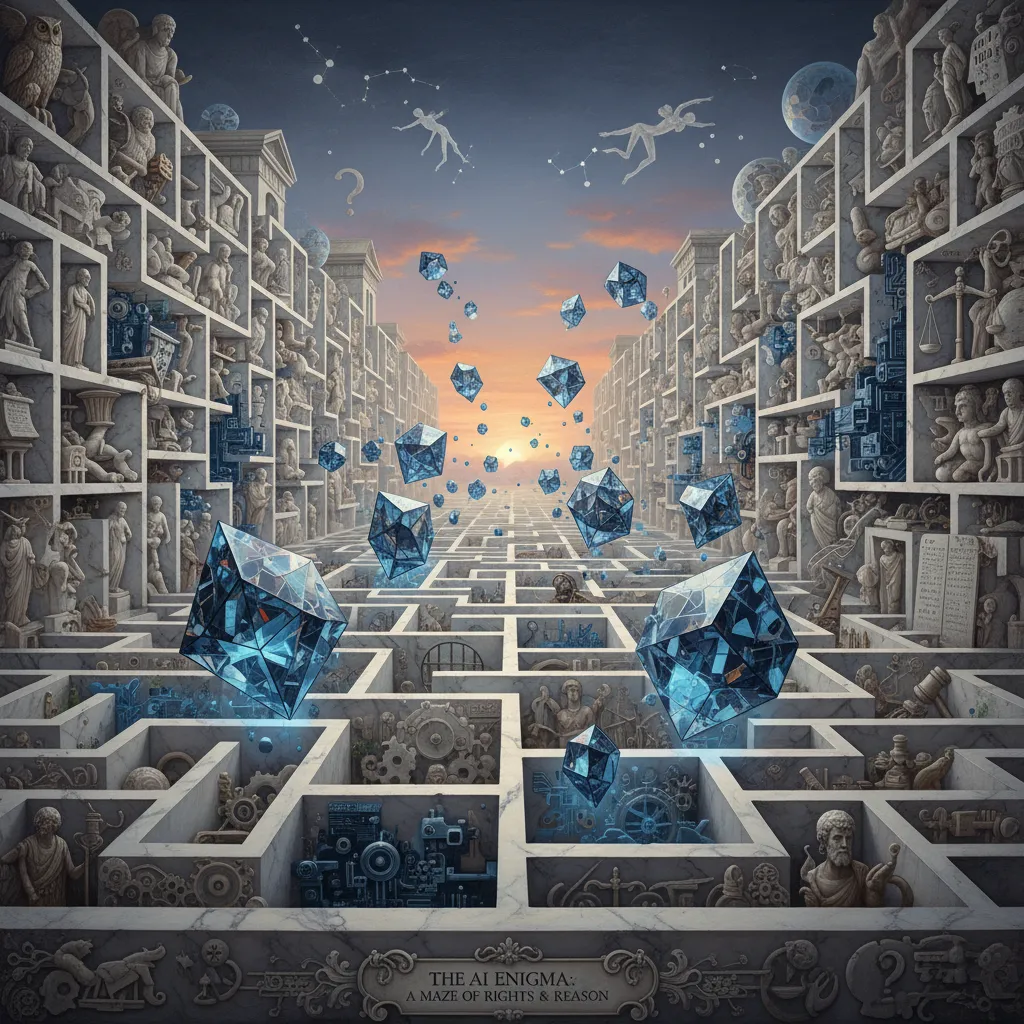Picture this: I’m in a bustling artist’s café, sketchbook open, when a friend leans over and asks, ‘Do you really think AI can make art that moves us?’ It’s a question I haven’t stopped thinking about. As tech headlines flood us with news about AI-generated masterpieces and Hollywood’s cautious dance with automation, I’m on a mission to separate reality from the razzle-dazzle. Buckle up for a candid tour through the promises, pitfalls, and peculiar surprises of generative AI in creative industries—told partly from my own messy creative journey.
1. From Canvas to Code: Creators Meet Their AI Co-Pilots
I still remember my first attempt at using an AI-powered art tool. I’d read all the headlines about Generative AI in creative industries—the hype, the promise, the supposed revolution. So, I opened up DALL-E, typed in a prompt, and waited. The result? Let’s just say it was more “abstract chaos” than “masterpiece.” There was a definite learning curve, and it wasn’t as intuitive as I’d hoped. But that awkward experiment taught me something important: Generative AI isn’t about instant perfection; it’s about collaboration and experimentation.
This is the reality for many creators today. Generative AI is showing up everywhere—text-to-image tools like Adobe Firefly, video generators like RunwayML, and even music composition platforms. These Generative AI applications are not replacing artists, musicians, or designers. Instead, they’re acting as creative “co-pilots,” helping us brainstorm, iterate, and push boundaries faster than ever before. As Scott Belsky put it:
“Generative AI is not here to replace you; it’s here to team up with you in ways we never imagined.”
Research shows that AI-powered content generation is fueling productivity and creative experimentation across sectors. In music, AI can suggest chord progressions or generate beats, giving musicians a fresh starting point. In animation and film, AI tools can quickly storyboard scenes or generate background visuals, freeing up time for more nuanced storytelling. Marketers are using AI to whip up campaign visuals and copy in minutes, while 3D modelers leverage AI to prototype new designs at a pace that was unthinkable just a few years ago.
The numbers back up this rapid adoption. According to recent industry research, the Generative AI market size in creative industries is expected to jump from $3.08 billion in 2024 to $4.09 billion in 2025—a staggering compound annual growth rate of about 32.8%. This surge is driven by real-world demand for text-to-image, music generation, video, 3D modeling, and animation tools. Brands are investing, startups are launching, and established players like Adobe and OpenAI are rolling out new features at breakneck speed.
Of course, not everyone is convinced. Some creators are embracing the turbo-speed brainstorming and the endless iterations that AI offers. They see it as a way to break creative blocks and explore new styles. Others remain skeptical, worried about originality, artistic value, or the ethical implications of AI-generated content. The debate is lively—and necessary. But one thing is clear: Generative AI in creative industries is no longer just a buzzword. It’s reshaping workflows, expanding what’s possible, and challenging us to rethink what it means to create.
As I continue to experiment with these tools, I find myself both excited and cautious. The learning curve is real, but so is the potential. Whether you’re a digital artist, a marketer, or a musician, the age of AI-powered creativity is here—and it’s moving fast.
2. Wild Cards: Cross-Domain Surprises and Awkward Mishaps
When I first started experimenting with generative AI in my creative projects, I expected a few surprises. What I didn’t expect was just how wild those surprises could be. One moment, I’m co-writing a script with an AI assistant, and suddenly, it throws in a plot twist so bizarre, I have to pause and ask myself—does this work, or has the algorithm gone off the rails? This unpredictability is quickly becoming a defining trait of cross-domain creativity in the age of AI.
Cross-domain creativity is one of the most exciting trends in generative AI right now. Imagine a musician who, with the help of AI, can generate album art or even direct a music video. Or a filmmaker who uses AI to compose an original soundtrack, blending genres and moods in ways that feel genuinely fresh. These kinds of collaborations are possible because AI is getting better at pattern recognition—spotting connections between music, visuals, text, and more, and remixing them into something new.
But here’s where it gets interesting: the same technology that enables these creative leaps can also lead to some truly awkward mishaps. I’ve heard stories of AI-generated scripts where characters suddenly start speaking in riddles, or music tracks that loop the same four bars until you’re ready to pull your hair out. Sometimes, the AI’s pattern recognition is just a little too eager, recycling clichés or inventing scenes that feel completely out of place. As Amanda Palmer put it:
"Every so often, my AI collaborator invents a character so bizarre, I wonder if it's testing me."
I’ve seen this firsthand. Once, while testing an AI for a short film project, it introduced a talking refrigerator as the hero’s sidekick. Was it a stroke of surreal genius or just a glitch in the system? Honestly, I’m still not sure. These moments can be hilarious, but they also highlight the double-edged sword of generative AI: its unpredictability is both a feature and a flaw.
Real-time processing advancements are making these creative experiments faster than ever. With new tools, I can brainstorm ideas, generate drafts, or remix visuals in seconds. This speed is a game-changer for creative workflows, but it sometimes comes at the cost of nuance. The AI might miss subtle emotional cues or cultural references, leading to results that are technically impressive but emotionally flat—or just plain weird.
Research shows that the generative AI market in creative industries is booming, with Generative AI Trends 2025 pointing to real-time processing, cross-domain tools, and multi-format generation as key drivers. Artists are venturing into unfamiliar formats, using AI to push boundaries and invent new genres. Yet, as these tools become more powerful, the line between creative genius and awkward mishap gets blurrier.
In the end, AI’s role as a creative co-pilot is still evolving. It’s opening doors to new forms of expression, but it’s also reminding us that creativity—whether human or machine—will always have its wild cards.
3. Dollars, Dilemmas, and the Road Ahead: Hurdles in the Creative AI Boom
As someone who’s spent years experimenting with creative tools, I’ve seen the rise of generative AI spark both excitement and unease. The promise is huge—AI can help us dream up new songs, images, scripts, and designs at a speed and scale we’ve never seen before. But as the buzz grows, so do the challenges of generative AI, especially when it comes to ethics, pricing, and who gets to play in this new creative sandbox.
Ethical Speed-Bumps: Who Owns What?
One of the biggest dilemmas in creative AI is ownership. If an algorithm generates a catchy tune or a stunning digital painting, who really owns it? The artist who prompted the AI? The developer who built the model? Or is it a gray area, with no clear answer? These questions aren’t just academic. They affect how creative professionals get paid and recognized. As research shows, ethical and inclusive AI adoption is a growing concern in creative sectors, with many artists and organizations calling for clearer guidelines.
"Artists must know the tool’s quirks before trusting their masterpiece to a machine." – Paula Scher
Pricing for Generative AI Tools: A Mixed Bag
Another major roadblock is the pricing for generative AI tools. Some platforms offer free or low-cost access, making them pocket-friendly for hobbyists and students. Others, especially those with advanced features, can be surprisingly pricey. There’s no industry consensus yet, and this uneven pricing creates a real barrier. Not everyone can afford to experiment with the latest AI models, which means access is often limited to those with deeper pockets or institutional support. This bias in accessibility shapes who gets to innovate—and who’s left out.
Case Studies: Successes and Flops
The benefits of generative AI are real, but so are its failures. I remember the time I tried using an AI logo generator for a client project. The results? Let’s just say the logo looked more like a Rorschach test than a brand identity. On the flip side, I’ve seen AI tools help musicians compose unique melodies and designers brainstorm fresh concepts in minutes. These case studies of generative AI highlight both the wins and the spectacular misses. Studies indicate that real-world examples show the spectrum of success, from boosting productivity to producing results that fall flat.
Public Awareness and Creative Coding Communities
Public awareness of generative AI is shifting fast. More creators are learning about these tools, and creative coding communities like the Processing Foundation are making AI more accessible and inclusive. These groups share resources, tutorials, and open-source projects, helping to level the playing field. As these communities grow worldwide, they’re helping more people experiment with generative AI, regardless of their background or budget.
Amidst the boom, creators confront ethical debates, financial barriers, and a whirlwind of success-and-failure stories on the road to an AI-powered future. The challenges of generative AI are real, but so are the opportunities for those willing to navigate the dilemmas and dollars that come with this creative revolution.
Conclusion: What’s the Point of Creativity, Anyway? AI, Humanity, and What Comes Next
As I reflect on the journey through generative AI in creative industries, I keep coming back to one simple truth: AI is both hype and helper. It’s a dazzling new paintbrush, but it’s not the artist. The future of generative AI is undeniably exciting—research shows the market is booming, with creative applications from text-to-image tools to AI-powered music and animation. But amid all this innovation, the heart of creativity still beats within us.
Let’s be honest: there’s a lot of noise around AI-driven design innovation. Some see it as a magic wand that will revolutionize art, design, music, and storytelling overnight. Others worry it’s the beginning of the end for human creativity. The reality, as I see it, is somewhere in the middle. Generative AI is transforming creative work, yes, but not by replacing people. Instead, it’s acting as a co-pilot—offering new ways to experiment, iterate, and push boundaries. Studies indicate that the most exciting breakthroughs are happening when technical power meets artistic intuition and human values.
But here’s the challenge: how do we keep creative industries oddly, beautifully human as AI takes center stage? It’s not just about the tools we use, but about the stories we tell and the values we uphold. Ethical and inclusive AI isn’t just a buzzword—it’s a necessity. As AI becomes more embedded in our creative processes, we need to ask tough questions: Who gets access to these tools? Whose voices are amplified, and whose are left out? How do we avoid bias, and ensure that AI-driven design innovation benefits everyone, not just a lucky few?
I’m hopeful, though. The rise of creative coding communities, the push for open-source models, and the growing public awareness of AI’s possibilities and pitfalls all point toward a future where technology and humanity can coexist—and even thrive together. There’s no denying that generative AI is changing the creative landscape. But the spark of originality, the sense of wonder, the urge to create something meaningful? That still belongs to people.
So, what comes next? I believe the future of generative AI in creative industries will be shaped by our willingness to blend innovation with empathy, and technical skill with artistic vision. There will be challenges—ethical dilemmas, questions about ownership, and the ongoing need to balance automation with authenticity. But if we approach these challenges with curiosity and care, we can build a world where AI is not just a tool for the privileged few, but a catalyst for creativity that’s accessible, ethical, and inclusive.
Ultimately, the tools will keep evolving. But the point of creativity—our drive to imagine, to connect, to express what it means to be human—remains unchanged. That’s something no algorithm can replace.



